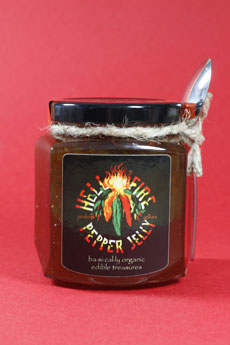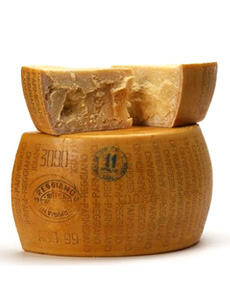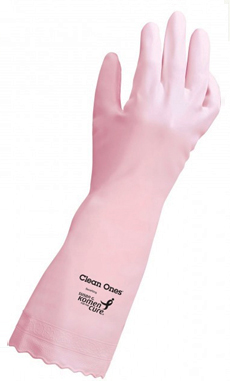|
Hellfire Pepper Jelly is a very fine example of the genre. The complex flavor comes from a mix of seven different chiles (sorry, we can’t bear to call them “peppers” because of a mistake* made 520 years ago by Christopher Columbus).
Buy it on the company website. A portion of sales goes to the Bruce Paltrow Oral Cancer Fund.
What Is Pepper Jelly?
Pepper jelly is a clear, sweet-and-spicy jelly that contains flecks of hot chile peppers. Different fruits and spices can be added for complexity—for example, pineapple or mango on the sweet side, and tomato or bell pepper on the savory side.
Pepper jelly is often made with jalapeños and serranos, which are medium-heat chiles. Habañero is one step up on the Scoville Scale, and Scotch bonnet is at the top of the scale, categorized as extreme. (See the different types of chiles.)
While on the hotter side, Hellfire Pepper Jelly does not cripple your taste buds. It’s exhilarating rather than searing.
Bring some Hellfire as a host/hostess gift for Halloween, or keep it in mind for teacher gifts, stocking stuffers and other small holiday gifts.
How To Use Pepper Jelly
Pepper jelly is most famously served as an hors d’oeuvre or snack with cream cheese—typically poured over a block of cream cheese on a plate and surrounded with crackers, so guests can help themselves. You can do the work yourself, garnishing individual crackers with cream cheese and jelly for passed hors d’oeuvre. Sweet and tart, hot and spicy, creamy and crunchy: it delivers a spectrum of favorite flavors.
You don’t need to have a party to serve it: We enjoy pepper jelly with peanut butter or cream cheese on whole wheat toast.
But don’t stop there: Here are dozens of uses with everything from omelets and yogurt to meatballs and cheesecake.
Find more of our jellies in our Gourmet Jams & Jellies Section.
What’s the difference between jam and jelly? Between preserve and conserve? Check out our “spread sheet”: our Jams & Jellies Glossary.
*Chiles were “discovered” in the Caribbean by Christopher Columbus, who called them “peppers” (pimientos, in Spanish) because of their fiery similarity to the black peppercorns with which he was familiar. However, there is no relationship between the two plants, or between chiles and Szechuan pepper. “Chile pepper” is a misnomer, and the term “pepper” is not used in Latin America. There, the term is chili, from chilli, the word in the Nahuatl language of the Aztecs. More on the history of chiles.
|



